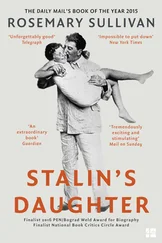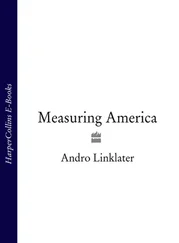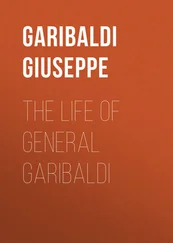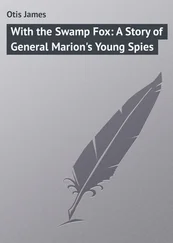When Burr at last emerged, he made his lack of enthusiasm for the Tennessee project apparent by informing Lyon that his first priority was to go to Philadelphia—“He talked as if the business was indispensable,” the congressman commented. The reason for this visit, kept secret from Lyon, was to make another approach to the British minister, Merry. According to the report that was later sent to London, Burr asked for “two or three frigates and the same number of smaller vessels to be stationed at the mouth of the Mississippi to prevent its being blockaded by such force as the United States could send.” He also wanted a loan of about $350,000. Neither money nor ships were forthcoming, but Aaron Burr’s preference for invading Mexico by the Veracruz route was unmistakable.
In April, having had his appointment as governor reluctantly confirmed by the Senate, General James Wilkinson set out for St. Louis with Nancy and his son James Biddle, now a lieutenant, and an entourage of officials and their families, including his secretary, Joseph Browne, Burr’s brother-in-law. During the winter, Burr and Wilkinson had communicated with each other using a cipher devised by Wilkinson and based on his Spanish model. Since Burr was about to undertake an exploratory journey to New Orleans, they would now follow the same route as far as the Mississippi River. Fresh from his meeting with Merry, Burr wrote Wilkinson to say he would wait for him in Pittsburgh until May 1 but no longer because he had a pressing schedule and “there is so much uncertainty and contingency in your march with a family.”
By the time the general arrived in Pittsburgh, the former vice president had left, and Wilkinson with his followers floated down the Ohio in a small convoy of boats without encountering anyone of importance. Waiting for him at Cincinnati, however, was Jonathan Dayton. Since almost everything that Dayton did was tainted by corruption, few people believed Wilkinson’s explanation that they were discussing the construction of a canal to bypass the Falls of the Ohio. It was noted, too, that when Burr had passed through earlier, he had spent much of a day in conversation with Dayton Burr had then made a detour into Tennessee to consult with Andrew Jackson, and during the five days he spent with the Tennessean, Wilkinson drifted ahead of him. Early in June, the general came to the grassy hillside where Fort Massac overlooked the river, and the convoy docked there.
The fort was built in an old- fashioned, star-shaped style to allow defenders to give covering fire wherever possible. Dearborn had just introduced a design for a cheaper, square blockhouse that would become the classic fort of the western prairies. With the Indian threat pushed back beyond the Mississippi, Fort Massac was about to become redundant, but it played a curiously fraught role in Wilkinson’s life. There he had come closest to exposure as a Spanish agent, first with the arrest of Owens’s murderers, and again when Thomas Power was stopped with Wilkinson’s barrels of silver dollars. There, too, he now became entrapped in the events that would see him branded forever as a traitor.
On June 8, 1805, Aaron Burr’s boat was rowed briskly into shore. He was in a hurry and drove his boatmen hard. During the next thirty-six hours, he and Wilkinson spent much time in private conversation. According to Wilkinson, they discussed Burr’s political ambitions, and in particular the discovery that his chances of being elected in Tennessee had gone because he’d arrived there too late. Instead, Wilkinson had suggested “he might be returned [as a delegate] from New Orleans.” For Daniel Clark, the man who became Wilkinson’s most damaging accuser, this was simply implausible “Here,” he wrote in his Proofs of the Corruption of General James Wilkinson , “is the first period at which I have positive proof of the general’s participation in Burr’s plans.” After Fort Massac, every move made by the two men would come to be studied in detail by contemporaries and by historians in order to understand the roles they played in the Burr Conspiracy.
THE ONE SALIENT FEATURE of the conspiracy was the position of power occupied by the general. To Burr and Dayton, it was obvious that whatever they might plan depended on Wilkinson’s co-operation. Everything hung on that. Not only had he been given the supreme military and political authority in the territory bordering Mexico, but within the army he possessed a dominating, personal influence. Its extent was made apparent when the long chronicle of Colonel Thomas Butler’s pigtail reached its final chapter.
Summoned to a second court-martial in New Orleans in July 1805, Butler was found guilty of “disobedience of orders” and “mutinous conduct” and was sentenced to suspension from his command of the Second Regiment for one year without pay. The city itself, however, had a more terminal punishment for his insubordination. On September 7, the colonel died of the yellow fever that repeatedly plagued New Orleans. His death triggered a final outburst of fury against Wilkinson, but also left vacant the command of the Second Regiment. The appointment of Butler’s successor started a turf war between the commanding general and the secretary of war that determined where power lay within the army.
By right of seniority, Butler’s successor should have been Lieutenant Colonel Thomas Cushing, adjutant general and Wilkinson’s close friend. But before the appointment could be made, Dearborn warned the general, “No measures should be taken in the consequence of the death of Colonel Butler in regard to promotions until you receive further information from this department.” The department’s preferred candidate for command of the Second Regiment was Colonel Samuel Hammond, a militia officer well-known to Dearborn as Wilkinson’s sworn enemy. The choice was deliberate. In Dearborn’s jaundiced view, the bloodbath of Federalist officers had produced a paradoxical result. Their places had been taken not by Republicans but by Wilkinson supporters.
The commander of the First Regiment, Colonel Thomas Hunt, was Wilkinson’s friend, as was Major Andrew Nicoli, next in line to become adjutant general. The superintendent of West Point military academy, Colonel Jonathan Williams, was a convivial companion whose enthusiasm for good living and military music once led the general to send him a mock-serious warning: “For your own amusment puff every Cheek at your will—let the Hills resound & the vallies sing— but give no occasion for those who listen with invidious pleasure, to fasten upon us the foul imputation of Ariostocratic Pomp & parade at the public expence.” With Cushing in command of the Second Regiment, Wilkinson’s allies would be everywhere.
Among senior officers below the rank of colonel, a high proportion put their names to a remarkable memorial just eighteen months later attesting to the qualities of Wilkinson’s character: “Generous, benevolent, and humane— his heart, his hand, and his purse, are ever open, and ready to succour distress, and relieve misfortune—hardy, enterprising, daring and brave, he encounters obstacles with alacrity, and is most exalted when pressed by difficulties . . With him for a leader, we shall neither fear dangers, nor foresee difficulties— but shall march to battle, with the assurance of victory.”
Alarmed by the extent of Wilkinson’s following within the army, Dearborn needed to put Hammond in a position of power where he could create a rival source of patronage within the army. But as each of Dearborn’s predecessors, going back to Henry Knox, had discovered, it was difficult to defeat the general in a head-on confrontation. Because Hammond was not a regular officer, giving him command of the Second Regiment threatened to block a long chain of potential promotions that allowed each rank down to mere lieutenants to count on moving up to the vacancy immediately above them. Such a move, protested Lieutenant Zebulon Pike, was “striking at the very root of ambition & stifling in the bud every noble sentiment.” Similar denunciations of Dearborn’s flouting of military convention streamed in from other outraged officers. When Wilkinson’s allies in the Senate, led by Samuel Smith, discovered that Hammond had once actively supported the subversive French minister Genêt, the excuse was enough to have his appointment overturned. Cushing duly took command of the Second Regiment, and a shuffling of promotions restored harmony to the army.
Читать дальше












